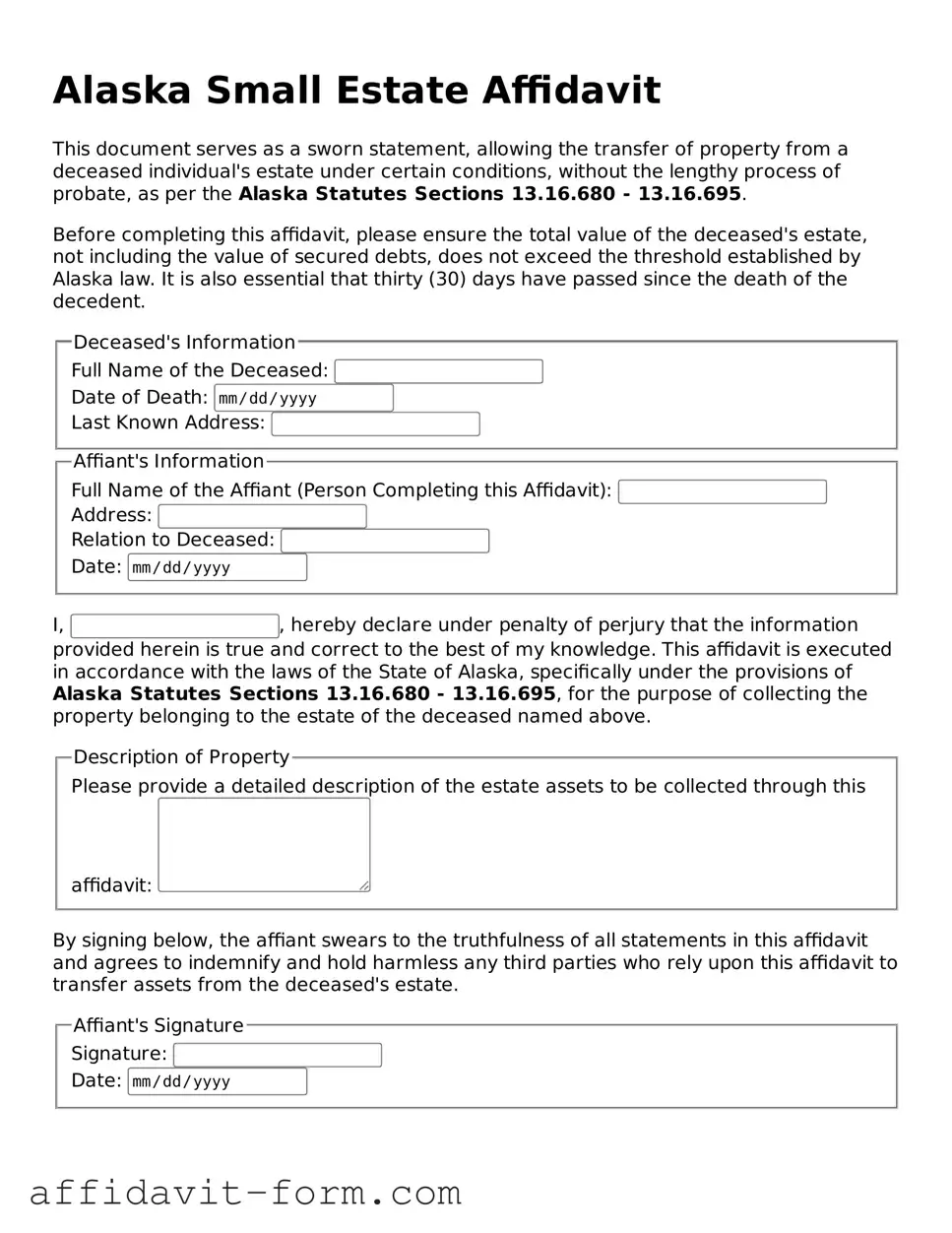Printable Small Estate Affidavit Form for Alaska
The Alaska Small Estate Affidavit form serves as a legal document that enables the efficient transfer of assets from a deceased individual’s estate to their rightful heirs without the need for a formal probate process. This form is applicable under certain conditions, primarily based on the estate's total value and the types of assets involved. It streamlines the inheritance process, making it accessible and manageable for individuals facing the loss of a loved one.
Fill Out Form Online
